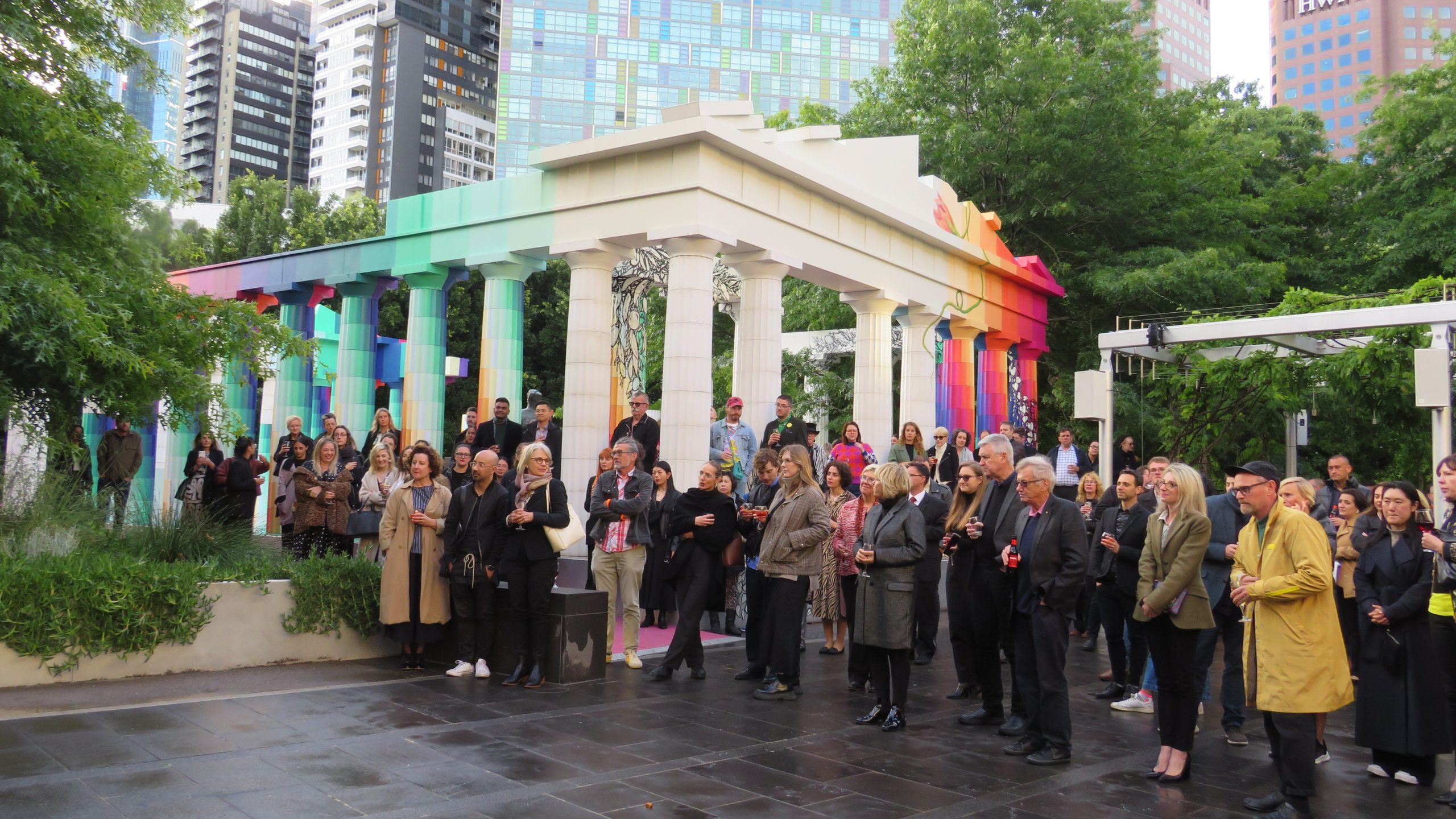By Mary Sinanidis.
As Athenians move around their city, they almost seem oblivious to the magnificence of the Parthenon – a backdrop to the multitude of small and large dramas in their daily lives.
In contrast, Adam Newman and Kelvin Tsang – the architects of the winning design of the 2022 NGV Architecture Commission – have never seen the Parthenon up close, but their academic quest to discover its secrets have led to the National Gallery of Victoria’s Temple of Boom which winks at Indiana Jones while paying homage to the architectural wonder of Greece.
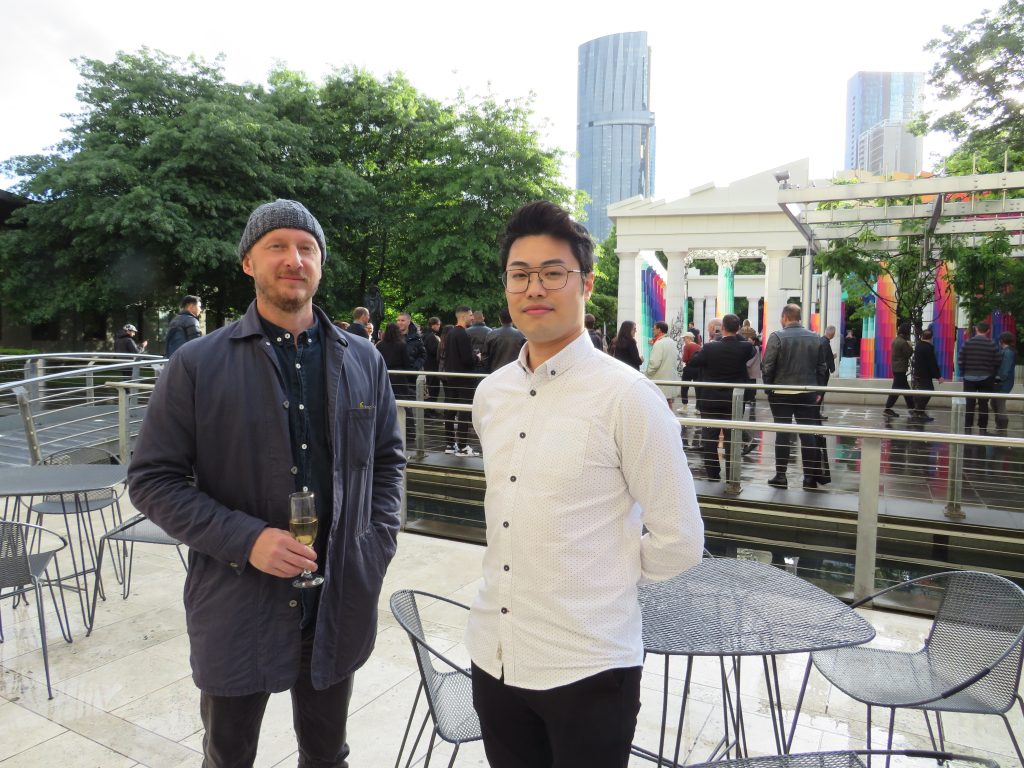
Hearing I’m from The Greek Herald, the creators of the work ask me when the best time to visit the Parthenon might be. Their plans to view the building that inspired their art were cut short by the start of COVID-19, and that’s when they laid the foundations of their Temple of Boom, fuelled by their own imaginings of seeing a building they’d missed out on.
The two met at Monash where Mr Tsang was Mr Newman’s student, and they now work together in Brunswick’s NWMN – a two-man practice with a strong focus on the reusability of materials and sustainability as they take on small residential projects.
Despite the success of their practice, they say they’re both still students when it comes to the Parthenon. “Thirty years I’ve been learning about the Parthenon, and you keep learning about the building and the history. It is endless,” Mr Newman said.
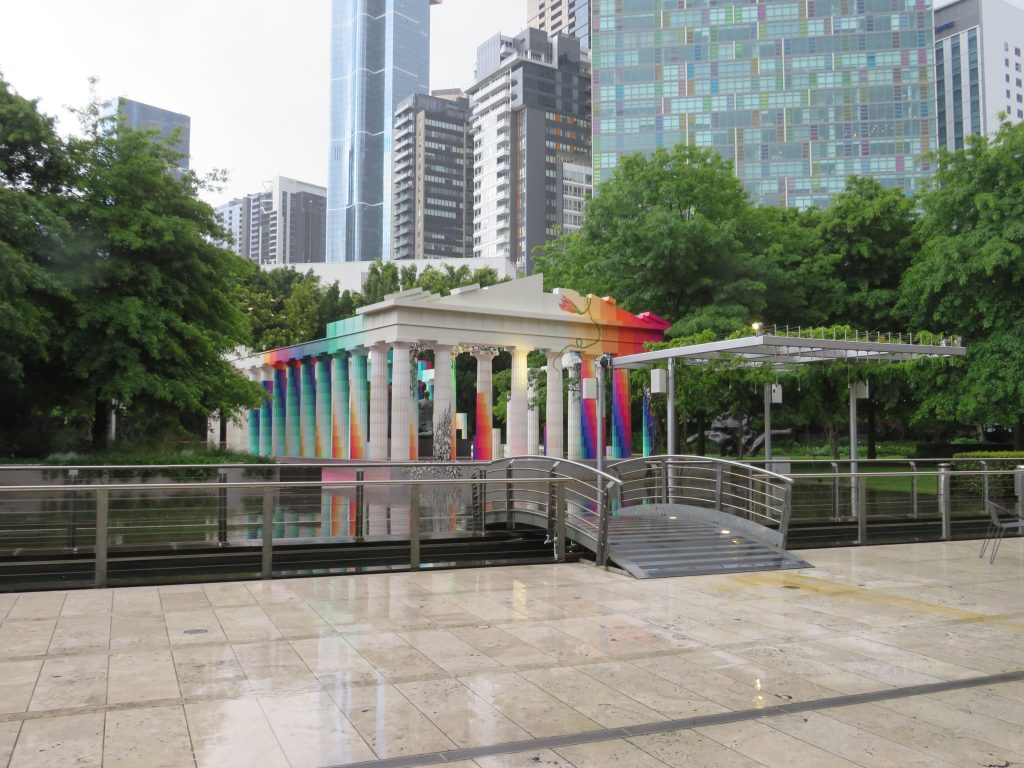
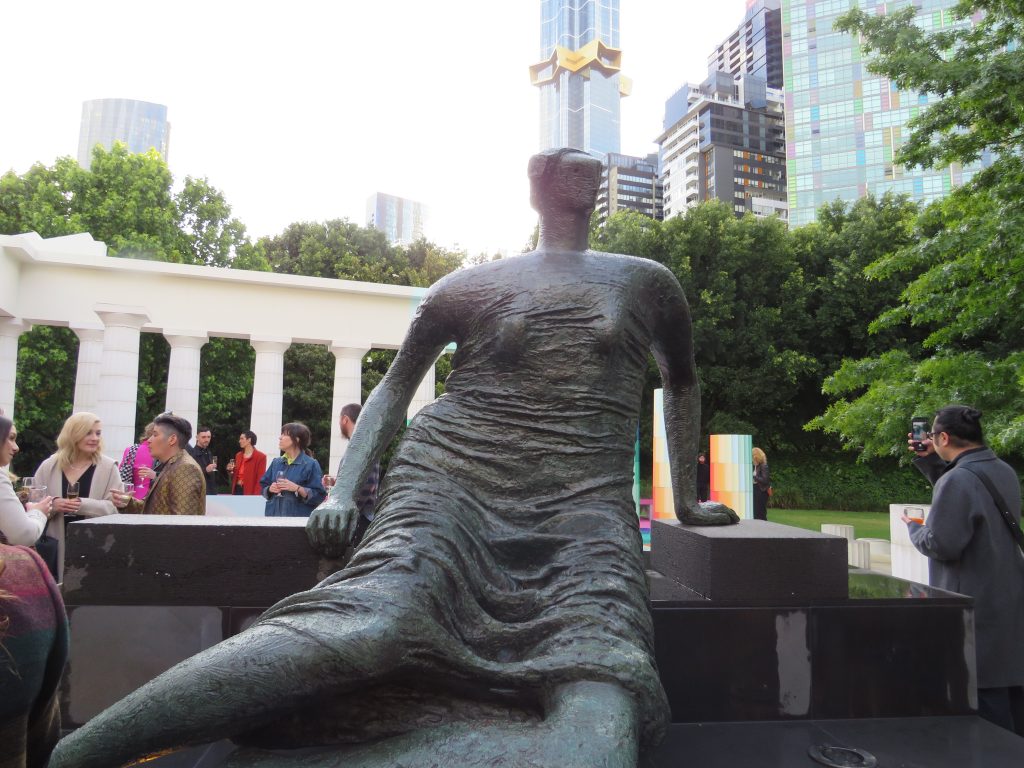
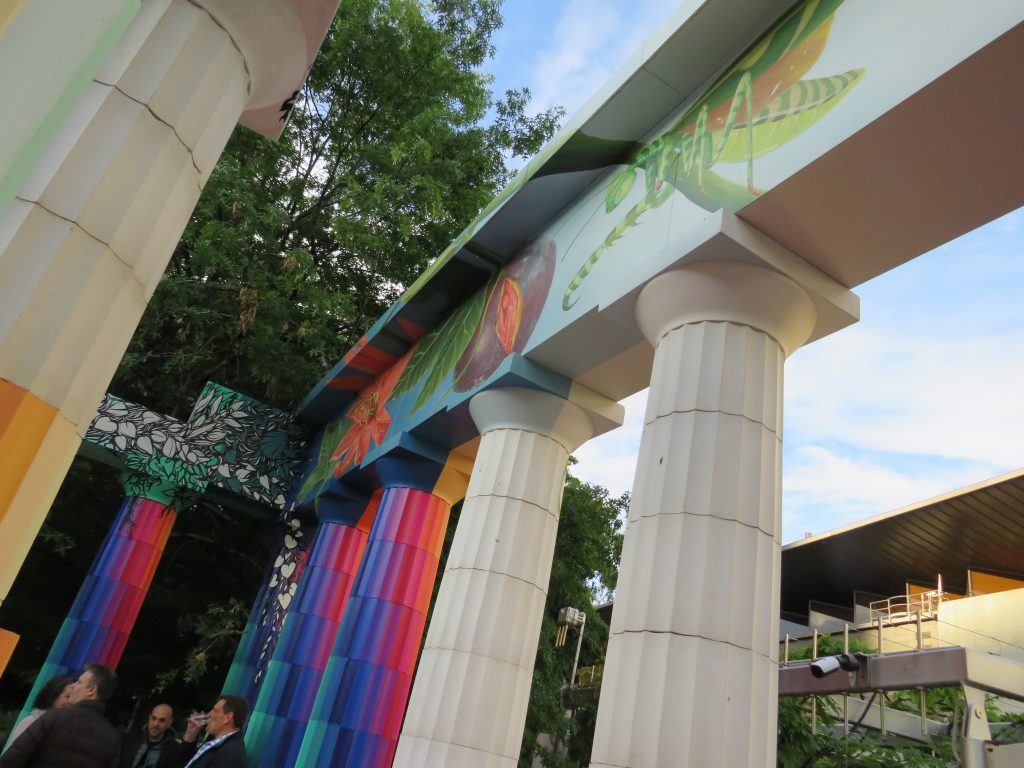
Mr Tsang told The Greek Herald that “studying architecture, it is one of the best buildings to research. The more you research the ingenuity of the Ancient Greeks, the more you fall in love with it.”
The architects wanted to respect the history of the building. “It’s a very potent symbol of democracy and civilisation and, in our opinion, it is the most recognisable building in the world. The most copied in the world. It is loaded with history and has so many different meanings to different people,” Mr Tsang said.
“Another layer to this is – ‘what if we bring this symbol and place it onto country, in Australia, Wurundjeri country, and bring about the conversation?’- What does this mean when we do this? My interpretation is different to your interpretation and it’s about getting the conversation started.”
He stops short of sharing an opinion on the long-standing conversation of whether the Parthenon Marbles should be returned to Greece. “I will not take a stand. I have my opinions, but it is about bringing about conversations and bringing awareness,” Mr Tsang said.

We rein in on other controversies – those of cultural misappropriation, for instance.
“There was some early robust conversation once the winners were announced,” Mr Newman said. “But (the work) is actually about the Parthenon, the history of it, its symbolism, geopolitics, the extraordinary technological prowess of the building and every sort of link that we currently have as a society back to 2,500 years ago. It is about everything. It is about human civilisation.”
They stop for a moment and look at the rays of sun striking the Temple of Boom just moments after a downpour, and how different the building looks from different angles. “Do you see the olive tree mural that is homage to the goddess Athena?” I am asked.
People present walk between the columns, gain different perspectives of the building, and do what they are meant to do in their interactions to the installation. Tim Marshall, Deputy Vice Chancellor of RMIT, said, “When this 2,000-year-old icon is transplanted, in a sense, to present-day Melbourne, we suddenly begin to look at the subject in a whole new way.”
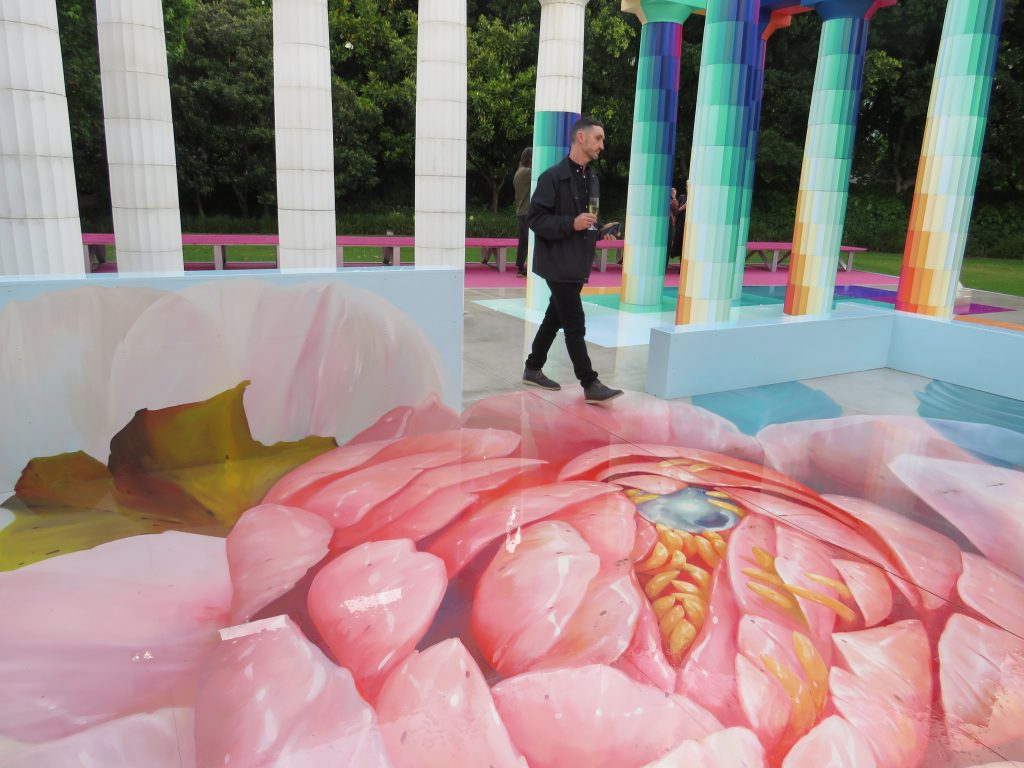
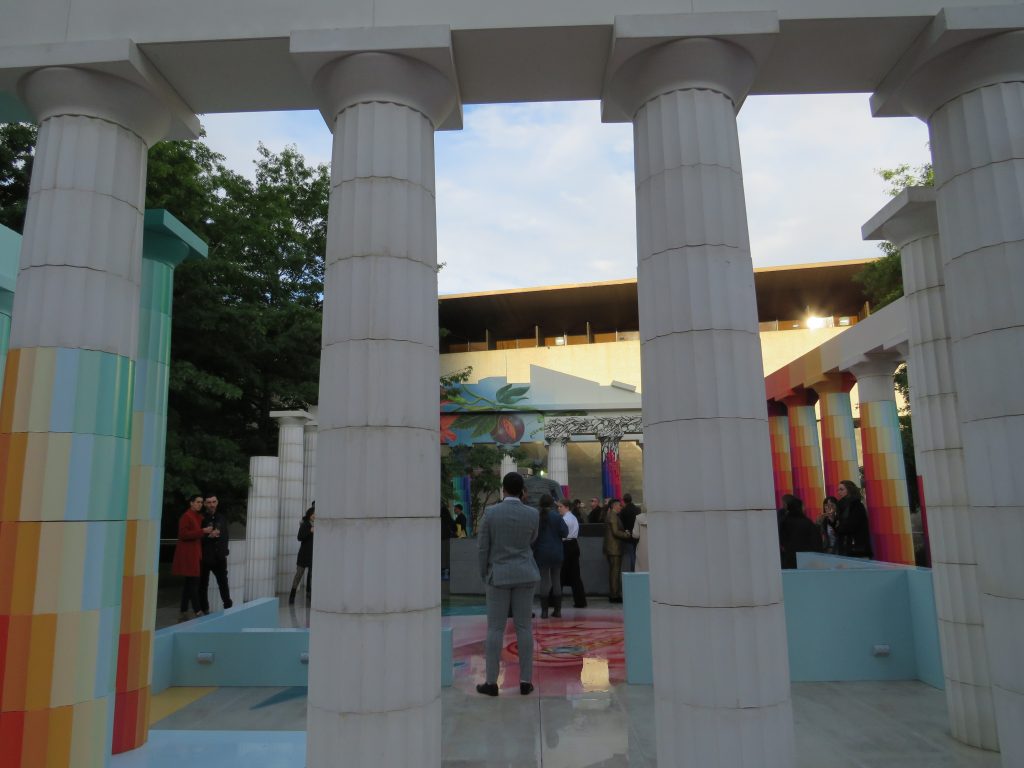
Mr Newman said he and Mr Tsang are still reviewing and appreciating their own work as different elements and people interact with it.
Made of glass-reinforced concrete, the Temple of Boom sits on a platform, an homage to the acropolis and the procession to the Parthenon. It invites people to make what they will of it and keep revisiting as artists layer it with colour and bring their own interpretations to enhance the work – a symbol of continuity but also very much of the present.
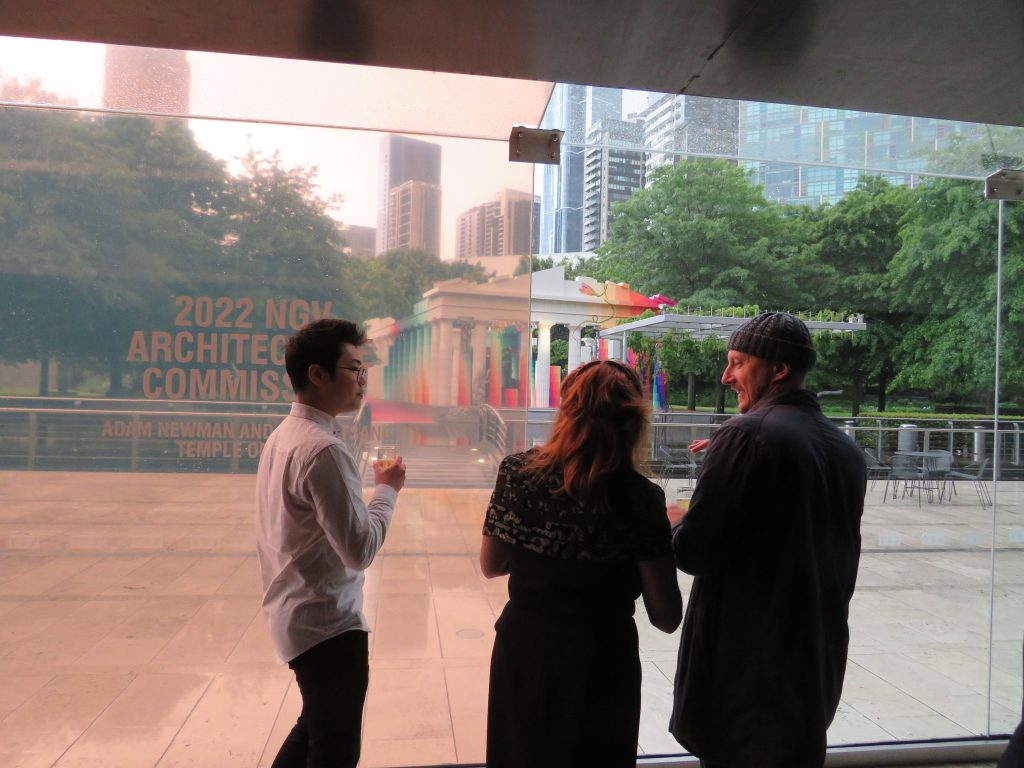
“This dynamic mural celebrates the history of the building, while simultaneously imbuing it with a contemporary sensibility which is very Melbourne,” Mr Marshall said. “As the building evolves before our very eyes, it asks us to consider the effect of time on all architecture and the notion of permanence.”
This is, indeed, a concern of all architects, whether it be Ictinus and Callicrates – the creators of the actual Parthenon – or Newman and Tsang.

By chance, architect Angelo Candalepas, passed by in the previous week. Inspired by ancient Greece in his own creation of The Fox, the NGV Contemporary which will extend from the current NGV site, the work caught his fancy. “We took him on a tour and showed him the details,” Mr Tsang said. “He was amazed.”
The architectural duo has been in talks with the Hellenic Museum and there will be VR tours on offer, as well as a number of theatrical performances, dances by the Manassis Dance Troupe, and of course DJs at the artwork as other artists add their own strokes onto it. It is hoped that the artwork can be a meeting place, an agora so to speak.
The NGV is at 180 St Kilda Road, Melbourne.

